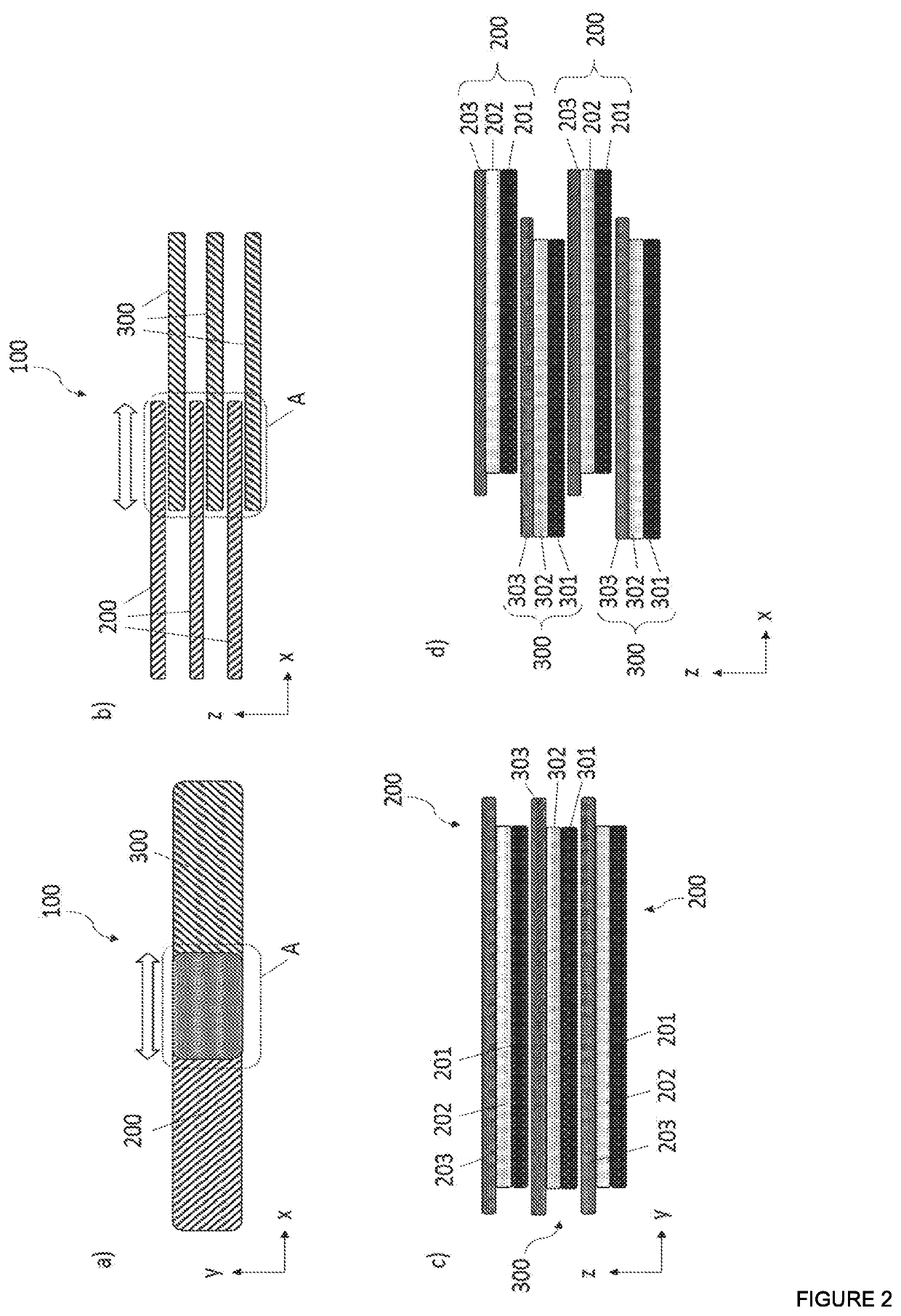Electrostatic brake-based haptic device
- Summary
- Abstract
- Description
- Claims
- Application Information
AI Technical Summary
Benefits of technology
Problems solved by technology
Method used
Image
Examples
examples
[0067]The ability to grasp objects is amongst the most useful skills we can perform in VR. One challenging aspect in supporting grasping in VR is the wide array of possible grasps which require the fingers to be free to move into different configurations. Traditionally, grasping feedback in VR has been supported via glove-based exoskeletons which create braking forces on the fingers, render localized tactile feedback on the fingertips, or combine aspects of both. These devices often employ complex mechanisms around the hand which may either add weight, constrain the movement of the fingers, or both. As a result, the full range of interaction capabilities of the human hand are under-utilized.
[0068]To address this challenge, the inventors introduced a finger-mounted haptic mechanism capable of achieving up to 20N of holding force on each finger when flexing inward. This novel approach is based on electrostatic attraction to create a rapidly controlled braking force between two electri...
PUM
 Login to View More
Login to View More Abstract
Description
Claims
Application Information
 Login to View More
Login to View More - R&D
- Intellectual Property
- Life Sciences
- Materials
- Tech Scout
- Unparalleled Data Quality
- Higher Quality Content
- 60% Fewer Hallucinations
Browse by: Latest US Patents, China's latest patents, Technical Efficacy Thesaurus, Application Domain, Technology Topic, Popular Technical Reports.
© 2025 PatSnap. All rights reserved.Legal|Privacy policy|Modern Slavery Act Transparency Statement|Sitemap|About US| Contact US: help@patsnap.com



